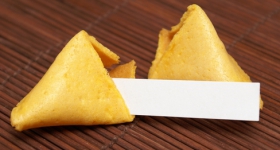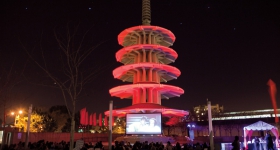Two cups. That should do it, I thought.
I’m in the kitchen, measuring out two scoops of yellow lentils. I pour them into a bowl and place them under a centimeter of water. They’ll soak all afternoon.
“Think that’ll be enough?” my partner asks. She’s smirking. Wants to plant a seed of doubt.
I sneer. “Yeah. You think I’m gonna be the one Bengali in the universe who can’t make dal?”
Over the next few hours, I discover I am that Bengali.
I’ve had dal tens of thousands of times. I contain the recipe. I should be able to snap my fingers and make it appear.
But I’m tasting as it cooks, and this ain’t it. The tenderness, the flavor, they’re all wrong.
I panic. I throw heat and seasonings at the problem. I taste every two seconds.
No point calling Mom for advice. I’m in Southeast Asia and she’s in California, 14 time zones away.
I get lucky. The dal turns out OK. Even my partner, who’s white, a former cook and a funny person, says so.
But there’s still a grin splashed across her face.
My two little cups have produced an industrial quantity of dal. We’re swimming in it, scrambling for tupperware to contain it. Forget feeding two people on a Saturday night. I’ve made enough for a small county.
How many times in my life have I had too much food sitting around? I’m blessed: I’ve never gone hungry. I grew up in America, the land of 40,000-square-foot supermarkets and supersized combo meals.
Abundance was just as present in my Bengali American home. I was raised by Bangladeshi immigrants who possess a zealous, lasting love for their traditional food. They and their relatives believe in stuffing you full of food and sending you home with boxes of leftovers.
Only in recent years have I recognized that growing up this way, amid plenty, has caused me to miss something deeply beautiful about our traditional food. This subtle something is the kind of thing that can get lost between generations, between people who grew up presuming food a source of security and those who learned this the hard way.
I called Mom in March, as COVID-19 had begun to spread in Northern California. She sounded shaken. She’d just escaped a circus at the store. People were panic-buying.
Mom had reckoned she could make a quick run for a loaf of bread. Wrong. There she was, a 60-something woman in a bumper car frenzy of shopping carts.
Bread in hand, mom waited in the long line. Around her, shoppers had their carts piled high with their own essentials: corn flakes, ramen, toilet paper by the bushel.
I tried to focus on the good news. “So you’ve got enough food at home?” I asked. It’s the same question she’s asked me thousands of times.
A beat. Her voice turned calm. Almost offended.
“Of course. We grew up during the Freedom War,” she said. “We know how to make things stretch.”
Mom did in fact grow up during the war of 1971, the one that made Bangladesh an independent country. When I was a kid growing up in California, my parents didn’t discuss it much — and I didn’t ask. I never noticed how the war was inscribed into so many little things, like the way Mom always kept ungodly amounts of food in the pantry.
But now there was a global plague. Around the world, billions of people were like us: stuck at home, fearing for the future. So many of us had turned to food as a simple, attainable source of comfort.
Mom had something to teach me about the Freedom War and the time she learned what our food can do.
In March 1971, West Pakistani troops blitzed Dhaka, then the capital of East Pakistan, hunting down nationalists, intellectuals, rebels and Hindus. The army first seized Dhaka, the country’s nerve center. Then it turned to the rest of the country, hoping to flush out resistance fighters and scare the population into submission.
This was just one bloody event in a decades-long tornado of chaos. In 1947, after the British withdrew from India, the Indian subcontinent broke into two countries, one majority Hindu, the other majority Muslim. One was India, occupying roughly the same borders we know today. The other was Pakistan, comprising two territories: one to the west of India and one to the east.
Fifteen hundred miles apart, these twin Pakistans, East and West, shared a name and faith but little else. They had different food, rich but distinct ethnic histories and different languages. Eventually their leaders also had conflicting views of whether their union was working out. In 1970 an independence-minded party swept elections in East Pakistan. It forced a difficult choice in the West. Should they give their weaker Eastern wing more autonomy or crush them?
At the time, Mom’s family lived in Rajshahi, a mid-sized city spitting distance from the Indian border. Word of the Dhaka massacre took weeks to reach their home. Soon they also learned the West Pakistani army, having exacted bloody discipline in the capital, was now turning to the rest of the country.
The household had eight people: seven of my family members and a trusted handyman who was as good as family. My Nana and Nanu (in Bangla: grandfather and grandmother) were the commanders. Their five squirrelly kids ranged in age from elementary school to university.
Mom was a wily, raven-haired middle child of about 15. She remembers how the mood in the house darkened.
“We could hear rumors about what the army was doing on their way,” Mom said. “Anything on their path, either they were burning, looting, raping, killing.” They’d arrive in Rajshahi within a week. Thousands had fled.
Nana was torn on whether to join them. He believed himself a model citizen: a pious Muslim, a soft-spoken civil servant who managed land records for the Pakistani administration in Islamabad. Scarred by the turmoil and violence of 1947, he hated the idea of more conflict. He raised his kids to focus on work and school, not such distractions as political agitation.
But he and Nanu both knew staying had its own risks.
“They were mostly worried about the children,” Mom said. “We had two grown boys, who were like prime targets of the army. If they came across them, they’d just shoot them. And then there are the girls, who are at risk of other kinds of danger.”
In the end it was a no-brainer.
They packed light: just a few bundles for the entire family. In went clothes and family valuables. In normal times, a family this size would also pack plenty of food. No Bengali family wants to live on the lam without assurance of its next meal. But speed was the priority now. They took enough for a short voyage.
One afternoon they piled into a handful of rickshaws and took the eastbound road out of town. Their handyman, whether out of loyalty, stubbornness or both, stayed behind to watch the home.
“Do you have enough food?” Mom and Dad have asked me some version of this question on every phone call we’ve had since 2000. I know it’s Bengali code for “How are you?” But I also know it reassures them when I rattle off my recent, present or future meals. It would wreck them to know I was hungry.
The way they raised me, hunger was impossible.
At our house, food was a regal affair. Make no mistake: Mom is a killer everyday cook. But every so often she put aside a Saturday and spent the whole day in the kitchen. By evening there were a dozen guests around the dining room table, just salivating.
Arrayed before them: curried chicken, spiced beef, pan-fried fish and deep-fried fish. Sautéed cauliflower, spinach, bitter gourd and eggplant — or, for a twist, mashed potatoes dashed with mustard oil. No Bengali table is complete without the staples: two or more vessels heaped with rice (in seasoned and plain varieties) and a bubbling cauldron of dal.
It’s a whole tableau of family, and plenty and sensory overload. Because Bengalis don’t just love food. They breathe it. If Mom’s the head chef you know everything will be bursting with cumin, coriander, turmeric and cloves. It will rumble with the deep-based flavors of onion, garlic and chili. It will be crowned with a shock of fresh herbs that everyone can name in Bengali but nobody knows how to say in English. It will have that cardiologist-be-damned penchant for frying things — fritters that crunch off in your mouth and heat you up from the core.
To my inner child, that is Bengali food. “Enough?” A ridiculous notion, as foreign as the moon.
But for a long time, I felt conflicted about Bengali food, even resentful.
When I was little, I spent the hours after school with the white family next door. Jane was hired as my babysitter, but really she was my second mom, and her sons were my brothers. We scribbled down our homework and ran off to blow the afternoon on basketball and video games and Nerf guns.
Around 6 pm, Jane served her boys dinner. Macaroni and cheese, hot dogs, Hamburger Helper. I leered as they devoured their meal. It smelled incredible. But the policy was clear. I was to have dinner at the Rahim household at 7 pm, when my parents got home from work.
I’d go home and pick at my food with a scowl. I pined for Hamburger Helper.
Eat your food, Mom growled, with a flicker of Nanu’s ferocity.
I felt misunderstood. Food was just part of it.
Mom and Dad grew up in Bangladesh. They weren’t out there in the schoolyard as the kid who didn’t know how to throw a football. They didn’t fantasize about having a name that was easy to say, like Ryan or Matt. They weren’t wearing goofy Kmart turtlenecks to school and looking like a big fat target for kids who got branded clothes.
If I couldn’t have those things, I just wanted a damn American meal. To feel normal for once.
The road from Rajshahi was lined with refugees. Mom was packed into a rickshaw, watching the countryside go by. This was the exodus, people dragging their luggage, kids, even furniture into the unknown. Some were retreating to their family villages. Others were making for refugee camps in India.
The family caravan went east for a few hours until the roads turned muddy. Then Nana and Nanu ordered everyone to get down. They switched to gorur gari — ox carts — and clattered into the rice fields. After all, Nana managed land records. He wanted to get off the grid.
By sunset they arrived at a large village home. Strangers came out to welcome them. The kids, mute with exhaustion, went in without a fuss. Inside were at least two other families, of similar size to Mom’s, also in hiding.
The women had prepared a hot meal in village style. A Bengali food snob might have called it unremarkable: rice, vegetables, a few shreds of fish with thin bones inside.
My family still talks about that dinner.
“One of the best meals I ever had,” Mom said.
“It was so simple, yet it tasted so heavenly,” said her older brother.
The home was impressive compared to others in the village. It had mud walls and floors, with ceilings of straw and tin. The head of home was a village elder — a devout, long-bearded Muslim who could command a room. My family had never met him before. For a reason only the grown-ups knew, he had offered them shelter.
Mom remembers village life as carefree. She spent her days running around town, jumping into ponds and playing with the local kids. “Everything was an adventure. We were in, like, adventure mode!” she said. For others, the days were slow and apprehensive. Mom’s older brothers hunched around a transistor radio, searching for the feeble BBC broadcasts and rebel fighters — the only alternatives to the propaganda now coming out of Dhaka.
They cheered on the rebellion, quietly, so Nana didn’t hear. They listened for details on where the West Pakistani army was headed next.
There wasn’t much else to do in the village besides worry, pray and eat.
Mom’s family started sending the boys to get food at the local market. Pickings were slim. Whatever they found, Nanu had to make a meal out of it.
Nanu, made rugged by the Depression, was equal to the task. Some of her achievements sound Paul Bunyan-esque. She could split an egg six ways. Turn four helpings of dal into eight.
Males weren’t allowed in the kitchen. They gulped down whatever came out of it. But as a girl, Mom was permitted the occasional peek.
That’s where she saw Nanu’s genius at work. It wasn’t magic at all. It was resourcefulness.
In peacetime dal was thick. “She would make it thinner so it goes further, right?” Mom said.
Given a fish, Nanu would serve it in a rich gravy packed with potatoes — which, poured over rice, would prolong the taste of the fish even when the meat was gone.
Ask anyone in my family. Somehow their stomachs were always full. Nanu had measured it out just right.
“Can you imagine the responsibility that she had on her shoulders, to feed these seven to eight people, three times a day on a limited budget?” Mom said. “But she did miracles.”
The family had spent about three weeks in the village when Pakistani authorities issued an order. Civil servants had to report for duty or they were deserters.
Nana and Nanu were in a bind. On one hand, the family was safe here in the village. On the other hand, if Nana lost his job, what was their future?
They chose to return to Rajshahi.
They packed up again. They thanked the host who had taken in a family of perfect strangers. The host family, so impressed by Nanu’s poise — and doubtless her cooking — promised to stay in touch. “She was a very dignified person,” Mom said. “I don’t know where she got it, but she did.”
When they got to Rajshahi, they found the city ransacked. Plumes of smoke drifted from torched buildings. The air smelled of rotting flesh. Somehow the family home had been spared and the family handyman overlooked. Dozens of neighbors had not been so lucky. The army had razed Hindus’ homes and temples but largely left Muslims’ structures alone. In a nearby well my uncle saw the floating bodies of a Hindu preacher and three neighbors.
Many more atrocities were committed that year, not all of them by West Pakistan, it bears mention. Nevertheless, the Bengali rebellion held on until December, when the Indian army swept in and ended the war within weeks. Bangladesh’s first day as an independent country was December 16, 1971.
I was stunned to learn, later in life, that Mom never learned the family recipes in any formal sense. She learned first through observation, as a girl allowed in the kitchen, and second through experimentation, as a working mom in America.
She knew what the food had to taste like. She knew what she could find in American stores. Then, like her mom, she worked backward. That’s the food I grew up eating.
That’s why it hit so hard, I think, when she related this story about the village. All my life, I thought she just knew how to cook. But here she was, telling me about the time she saw firsthand what our food can do when it’s pushed to the limit. How it provides some faint comfort to people who are scared and isolated and unsure of the future.
How it “stretches” to give more to the hungry. How it finds a way to be enough.
That’s something any Bengali should be proud of.
Even if, like me, they can’t cook worth a damn.
In May, at the end of Ramadan, I decided to celebrate in the most Bengali way I could think of, which is deep-frying something. My aspiration was the piyaju, a simple fritter composed of pureed dal, chopped onions and herbs. I’ve eaten thousands.
Of course I dialed Mom, 14 time zones away, for advice. But I had missed my window. She picked up the phone, tired and annoyed.
I begged her for the CliffsNotes, just a few seconds, I promise. “Go look it up on YouTube,” she grumbled. “I’m going to sleep.” I laughed and hung up. How times change.
But as I fried my fritters, I realized she was teaching me something.
As usual, I’d totally overbudgeted. I had mountains of piyaju, way more than I could eat. My Nanu would have been appalled at my excess. Sometimes the recipe isn't something you can teach, it's just something you have to learn for yourself.










Comments